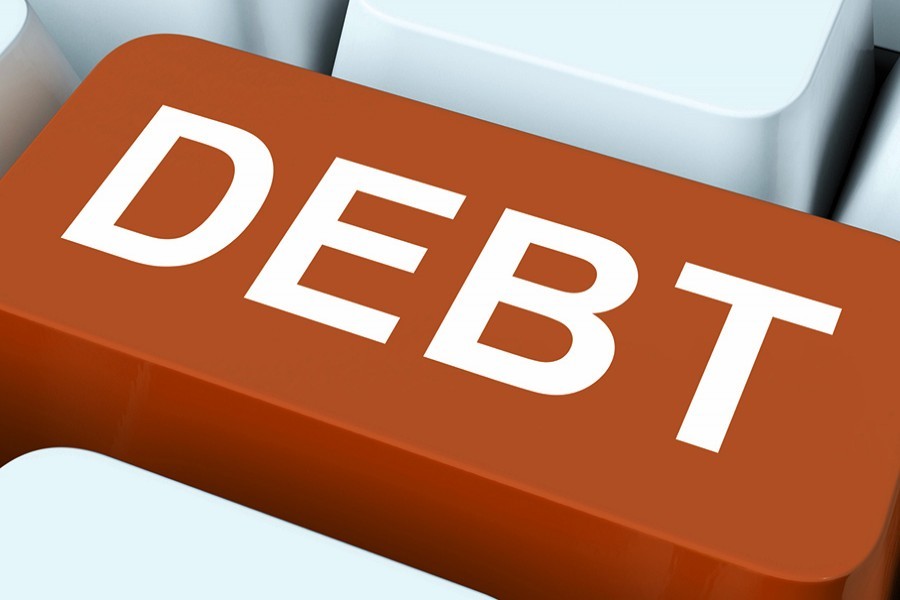
Published :
Updated :

The soaring public debt is, no doubt, a matter of serious concern for the country's economy in the days ahead as debt servicing even at a moderate rate outstrips the government's capacity to mobilise resources – domestic or otherwise. The picture looks grim, grimmer than it ever was in the past. A FE report has recently dealt with the issue at some length. According to the report, public debts in Bangladesh ballooned by 20 per cent to Tk 16.2 trillion in the past fiscal from Tk 13.5 trillion in FY22. Responsible for the higher debt buildup understandably is the substantial rise in external borrowings and higher recurring expenditures during the year. For example, the government had secured an IMF loan amounting to $470 million out of a package deal, meant for mending the erosion of the country's falling foreign exchange reserves, and it is expected to receive another $681 million in a second tranche within December this year.
Data released by the Ministry of Finance this week show that external debt at the end of FY 2022-23 stood at Tk 6.7 trillion, up by nearly 36 per cent year on year. However, domestic debt, from banking and non-banking sources, stood at Tk 9.44 trillion in a yearly rise by over 11 per cent. The finance ministry data further show that as a percentage of the GDP, total debts and liabilities accounted for 36.34 per cent in FY 2023, up from 33.79 per cent in FY22. The data reveal that interest payments on debts amounted to Tk 925.38 billion, compared with Tk 757.59 billion in the previous fiscal. While the size of external debt increased during the year (FY23), expenses on domestic interest were 90 per cent of total expenditure due to the higher interest rates for the government securities.
In the current fiscal year, the country is projected to spend around Tk 943 billion on debt servicing, including both domestic and external interests. This constitutes Tk 820 billion for domestic interest and Tk 123.76 billion for external interests. The significant debt servicing leaves little room for the government to fund development projects and other related expenditures. The government's main recourse is borrowing from domestic and foreign sources. Given the situation, there is no choice but sustainable debt management to pull the economy out of the dangers it faces.
Debt sustainability is possible in a situation where a borrower government is expected to be able to continue servicing its debt without an unrealistically large correction to the balance of income and expenditure. Going for such correction, to the extent not desired, may further disrupt the economic landscape. The recourse here could be austerity and increased revenue generation, among others. Saving resources from unnecessary and non-essential expenditures through strictly monitored import control, parting with development works in less priority areas, curbing defaulted private sector loans, reining in money flight are some of the measures that may be considered crucial for avoidance of the threats that loom large not too far in the horizon.


 For all latest news, follow The Financial Express Google News channel.
For all latest news, follow The Financial Express Google News channel.